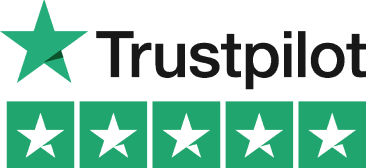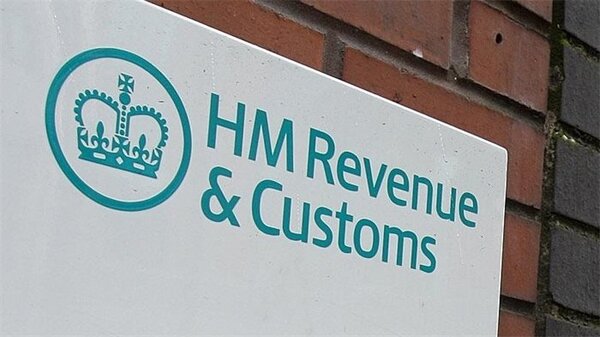Let’s Break This Down Together...
Got a side hustle and wondering how much you can earn before paying tax? You're not alone, many people aren’t sure when they need to report extra income.
From the £1,000 trading allowance to when you need to register for Self Assessment, we’ll cover what matters.
This guide breaks it all down simply so you can stay on the right side of HMRC while making the most of your earnings. Let's go!
When Do You Start Paying Tax on Your Side Hustle?
Once you earn more than £1,000 from your side hustle, you’ll need to register for Self Assessment. This means reporting your earnings to HMRC.
However, this doesn’t automatically mean you’ll pay tax. Everyone has a Personal Allowance of £12,570 for 2024/25 which is your overall tax-free amount.
If you have a main job, some or all of this Personal Allowance might already be used up. Your side hustle earnings will be added on top, and if your side hustle is considered a second job, it may affect your tax code and allowances.
For example, if you earn £25,000 from your day job, you’ve already used your full Personal Allowance. Any side hustle income that is paid to you and exceeds £1,000 will be taxed at your normal rate.

Selling Personal Possessions: Do You Owe Tax?
Clearing out your attic or selling unwanted items at car boot sales can be a great way to earn some extra income, but do you need to pay tax on it? Generally, if you’re selling personal possessions for less than £6,000 each, you won’t need to pay capital gains tax or income tax. This means that most casual sales like old furniture, gadgets, or clothes are tax free.
However, if you regularly buy and sell items with the intention of making a profit, HMRC may view you as a trader. In this case, your profits become taxable income, and you’ll need to pay income tax on your earnings. The same applies if you sell a single item for more than £6,000, as this could trigger capital gains tax.
Don’t forget about the tax free trading allowance of £1,000. If your total income from selling personal possessions stays below this threshold in a tax year, you won’t need to pay tax or report it. But if your profits exceed £1,000, you’ll need to declare them and may need to pay tax. Always keep records of your sales and purchases to work out your taxable income and make sure you’re using the trading allowance correctly.
Online Platforms and Tax: The Digital Hustler’s Guide
Online sellers earning extra income through online platforms like eBay, Airbnb, or Vinted is more popular than ever, but it’s important to understand your tax obligations. If you sell goods or services online, the income you make is usually taxable and needs to be reported on your self assessment tax return. Digital platforms may also share your sales data with HMRC, so it’s essential to keep your tax affairs in order.
You can use the £1,000 trading allowance to reduce your taxable income from online sales, which is especially helpful for those just starting out. If your online sales exceed this allowance, you’ll need to declare the income and may be able to claim allowable expenses, such as postage, packaging, or platform fees, to lower your tax bill.
Accurate record-keeping is key. Track all your online sales, business expenses, and any extra income you earn from side hustles on digital platforms. This not only helps you complete your tax return correctly but also ensures you’re claiming all the business expenses you’re entitled to.

Registering with HMRC: Don't Miss the Deadline
If your side hustle brings in more than £1,000, you must register with HMRC by 5th October. This deadline follows the tax year in which you exceeded the threshold. Once registered, you will need to file a self assessment return to report your side hustle income.
So if you started making over £1,000 between April 2024 and April 2025, you’d need to register by 5th October 2025.
Missing this deadline can result in penalties, so mark it in your calendar. Registration is straightforward through the HMRC website. After registering, it’s important to submit your tax returns on time to avoid penalties.
You’ll need your National Insurance number handy when you register. The process takes about 10 minutes to complete.
Keeping Records: The Boring but Essential Bit
Even if you earn less than £1,000, it's good practice to keep records of your side hustle income and expenses.
A simple spreadsheet or dedicated app will do the job. Track all sales, purchases, and expenses as you go.
Keep receipts and invoices for everything related to your side business. Digital copies are perfectly acceptable to HMRC.
If you work from home, you can claim a proportion of your household bills as business expenses. HMRC also offers a simplified flat rate option.
Tax-Saving Tips for Side Hustlers
If your side income exceeds £1,000, you can choose to deduct your actual business expenses instead of using the Trading Allowance.
This makes sense if your expenses are more than £1,000. You can claim for materials, travel, advertising, and even some home office costs. Claiming allowable expenses can directly reduce your side hustle tax bill, lowering the amount of tax you owe.
Consider opening a separate bank account for your side hustle. This makes tracking income and expenses much easier at tax time.
Setting aside about 25-30% of your profits for tax is a good rule of thumb. Planning ahead in this way helps you manage your hustle tax bill and avoid surprises. Understanding your tax liabilities is also crucial to ensure you set aside enough for taxes.

Final Thoughts
Understanding your tax obligations doesn't need to be complicated. Remember the key £1,000 threshold – stay under it, and you're tax-free with no reporting.
Go over it, and you'll need to register, but you can still reduce your tax bill. Claiming expenses or using your remaining Personal Allowance can help.
Being tax-compliant from the start saves headaches later. Plus, knowing your tax situation helps you price your products or services properly.
This ensures your side hustle is truly profitable after tax, not just before it.
Pie tax: Simplifying Side Hustle Tax Management
Starting a side hustle should be exciting, not stressful because of tax worries. Pie tax tracks all your income streams and automatically calculates your remaining tax-free allowance.
Our app suggests deductible expenses specific to your type of side hustle. This helps you legally minimise your tax bill throughout the year.
When it’s time to file, Pie.tax makes Self Assessment straightforward. We turn hours of paperwork into a simple, guided process. The app also helps you report your income to HM Revenue, ensuring you comply with all tax obligations.
The app sends timely reminders about important tax deadlines. This ensures you never face late filing penalties.
Fancy seeing how it works? Take a peek at the Pie tax app today.
Quick and Easy Guide to add Multiple Income Source
Follow these steps to track multiple income sources and view real-time tax calculations.
To create an income source, find the 'Quick Add' button in the middle of the navigation bar, select 'Create Income Type' from the top of the screen to open the options menu. Fill in the details for your chosen income type, then Save. You can always view or edit this income in “All Incomes.”Step 1

You can view your real-time tax figures directly on the Pie app's home page. Your latest tax calculations are clearly displayed, giving you an instant overview of your current tax position. Step 2













